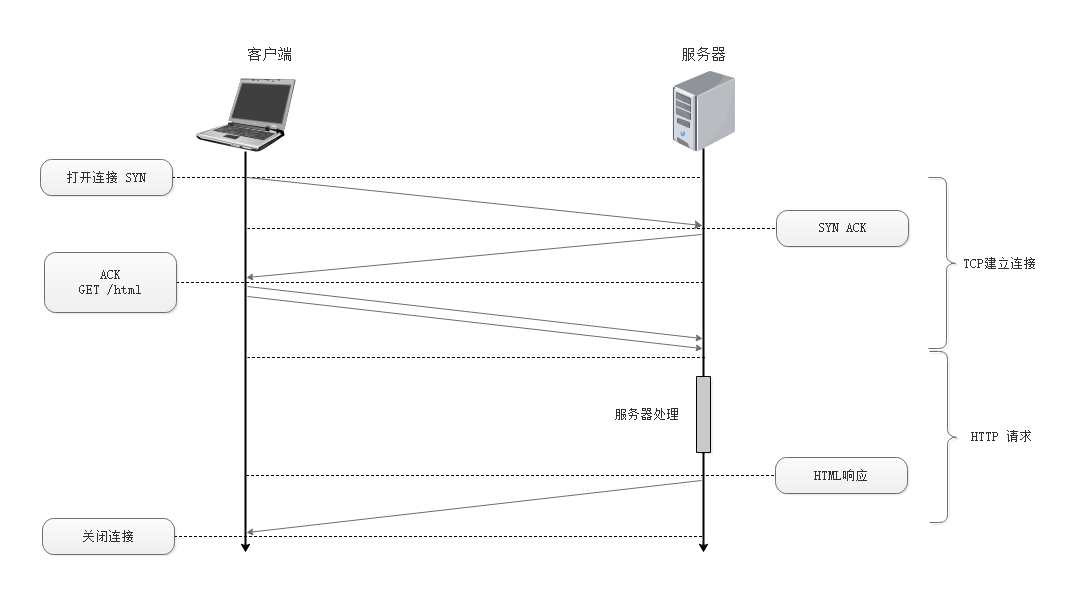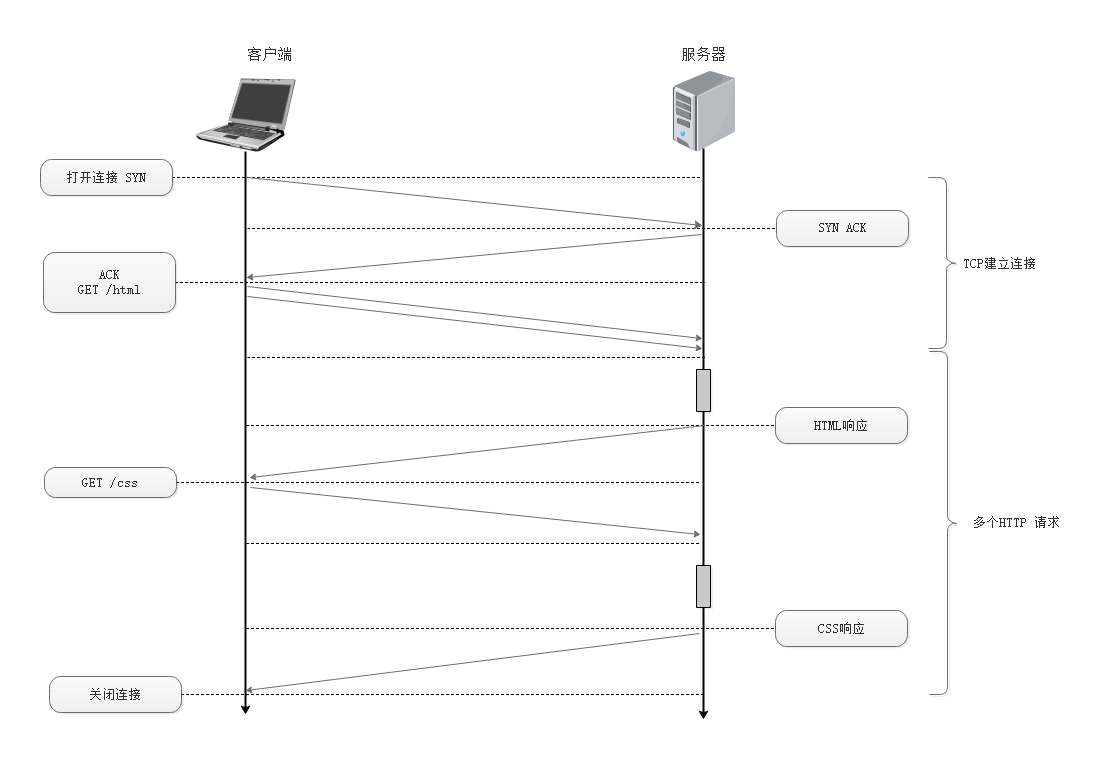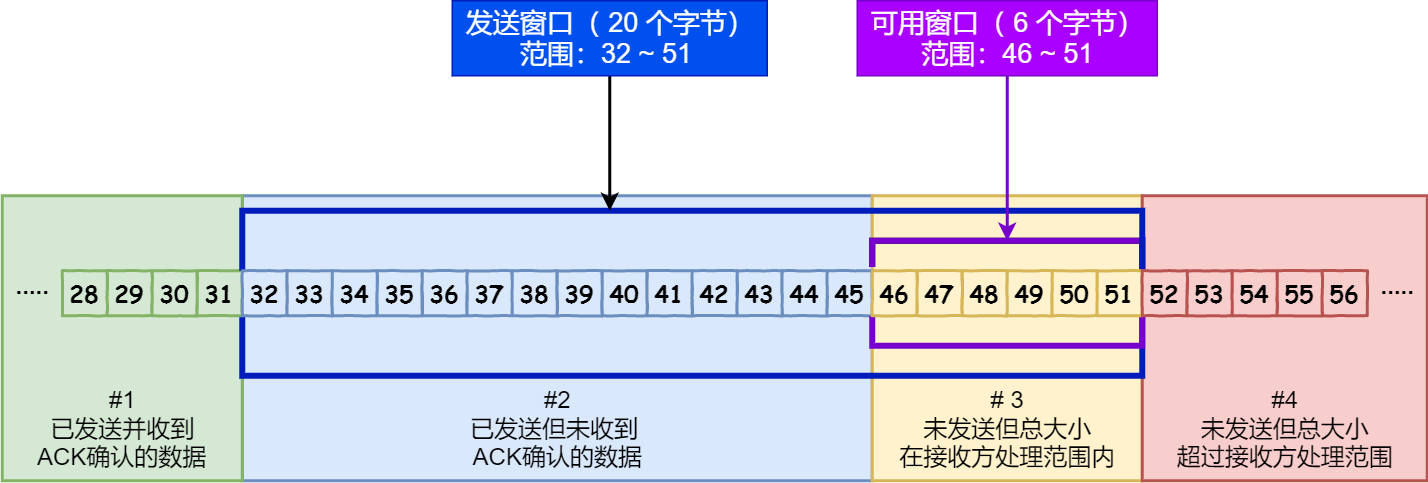RPC:gRPC
这篇文章内容主要包括:1)gRPC 基本介绍;2)Java gRPC 实例;3)HTTP2 协议介绍;4)gRPC over HTTP2,流协议的介绍;
概述
Wikipiedia 对 gRPC 的描述:
gRPC (gRPC Remote Procedure Calls1) 是 Google 发起的一个开源远程过程调用 (Remote procedure call) 系统。该系统基于 HTTP/2 协议传输,使用 Protocol Buffers 作为接口描述语言。 提供的功能有:
- 认证( authentication);
- 双向流(bidirectional streaming);
- 流控制(flow control);
- 超时(timeouts)。
在这篇文章重点是讲述基于 HTTP2 协议,如何实现双向流。
Java gRPC 实例
在该实例中,构建工具使用 maven。
引入 jar 包及编译插件
1. 引入 gRPC jar 包
gRPC 使用的版本是 1.41.0 1
2
3
4
5
6
7
8
9
10
11
12
13
14
15
16
17
18
19
20
21
22
23
24
25
26
27
28
29
30
31
32
33
34
35
36
37
38
39
40
41
42
43
44
45
46
47
48
49
50
51
52
53
54
55
56
57
58
59
60
61
62
63
64
65<properties>
<project.build.sourceEncoding>UTF-8</project.build.sourceEncoding>
<grpc.version>1.41.0</grpc.version><!-- CURRENT_GRPC_VERSION -->
<protoc.version>3.17.2</protoc.version>
<netty.tcnative.version>2.0.34.Final</netty.tcnative.version>
<maven.compiler.source>1.9</maven.compiler.source>
<maven.compiler.target>1.9</maven.compiler.target>
</properties>
<dependencies>
<dependency>
<groupId>io.grpc</groupId>
<artifactId>grpc-protobuf</artifactId>
</dependency>
<dependency>
<groupId>io.grpc</groupId>
<artifactId>grpc-stub</artifactId>
</dependency>
<dependency>
<groupId>org.apache.tomcat</groupId>
<artifactId>annotations-api</artifactId>
<version>6.0.53</version>
<scope>provided</scope> <!-- not needed at runtime -->
</dependency>
<dependency>
<groupId>io.grpc</groupId>
<artifactId>grpc-netty</artifactId>
</dependency>
<dependency>
<groupId>io.netty</groupId>
<artifactId>netty-tcnative-boringssl-static</artifactId>
<version>${netty.tcnative.version}</version>
<scope>runtime</scope>
</dependency>
<dependency>
<artifactId>slf4j-api</artifactId>
<groupId>org.slf4j</groupId>
<version>1.7.26</version>
</dependency>
<dependency>
<groupId>ch.qos.logback</groupId>
<artifactId>logback-classic</artifactId>
<version>1.2.6</version>
</dependency>
<dependency>
<groupId>junit</groupId>
<artifactId>junit</artifactId>
</dependency>
</dependencies>
<dependencyManagement>
<dependencies>
<dependency>
<groupId>io.grpc</groupId>
<artifactId>grpc-bom</artifactId>
<version>${grpc.version}</version>
<type>pom</type>
<scope>import</scope>
</dependency>
</dependencies>
</dependencyManagement>
2. 引入 Java gRPC 编译插件
编译插件主要是根据接口定义文件自动生成客户端及服务端代码,接口文件放在工程源代码目录下:src/main/proto,生成的代码位于如下目录:target/generated-sources/protobuf。
1 | <build> |
执行 mvn package 命令便生成 gRPC 相关的代码。
定义接口文件
接口文件使用 Protocol Buffers 定义,在这里定义了一个 Greeter 服务,它提供了 gRPC 支持的四种通信模式:
- SayHello, 实现 request-response 模式;
- LotsOfReplies, 实现 request-stream 模式;
- LotsOfGreetings, 实现 stream-response 模式;
- BidiHello, 实现 stream-stream 模式。
其中, HelloRequest 是请求消息,HelloReply 是响应结果。
1 | syntax = "proto3"; |
stream 的处理逻辑主要通过 StreamObserver
接口来实现,只要持有该对象,我们就可以接收和发送 stream
数据,其定义如下: 1
2
3
4
5
6
7public interface StreamObserver<V> {
void onNext(V var1);
void onError(Throwable var1);
void onCompleted();
}
- onNext: 接收或发送下一个数据;
- onError: 接收或发送一个异常;
- onCompleted: 结束流操作。
客户端代码
通过代码可以看到,gRPC 提供了两类连接服务器的客户端代码:GreeterBlockingStub 和 GreeterStub,它们的区别是阻塞和非阻塞,其中,除了 request-response 可以使用阻塞式的客户端,有 stream 的请求都是使用非阻塞的。stream 的操作通过 StreamObserver 实现。
1 | public class HelloWorldClient { |
服务端代码
gRPC 提供了服务器 Sever 的实现,对于开发者而言,只要提供一个接口的实现类,如 GreeterImpl, 并注册到 Sever 中即可。
1 | public class HelloWorldServer { |
HTTP2
gRPC 底层的通信协议是 HTTP2,其 stream 的特性就是基于 HTTP2 stream 来实现的,要理解 gRPC 的实现,首先先要理解 HTTP2 协议。
HTTP 演进
HTTP 内容比较多,每一次版本升级的特性也比较多,我们在这里仅仅选择“连接复用”的角度来阐述 HTTP 的演进。
HTTP 1.0 在 HTTP 1.0 协议中,一个 TCP
连接只承载了一次网络请求,TCP 的复用率比较低,如下图所示: 
在这种场景下,建立 tcp 连接占了较大一部分开销,为了提高 TCP 的复用率,HTTP 1.1 引入了“持久连接”和“管道”的技术。
HTTP 1.1 在 HTTP 1.1 协议中,一个 TCP 连接可以被多个
HTTP
请求共享,这些请求是按序发送,下一个请求必须在上一个请求收到响应之后才能发送,如下图所示:

为了提高发送的效率,HTTP 1.1 引入了“管道”技术,可以并行地发送多个 HTTP 请求,而不用等待上一个请求的响应。但响应结果仍然是有序的,即上一个请求的响应发送之后,才能发送下一个请求的响应。这就引发了 HTTP 的队头阻塞(head-of-line blocking)问题,上一个请求的响应会影响后续的响应。如果前一个请求的结果比较大,就会阻塞后续请求的响应。
HTTP 2.0 HTTP 2.0 为了解决 HTTP
队头阻塞的问题,引入了 stream 的概念。将一个 TCP 连接逻辑划分为多个
stream,每一个 stream 可独立负责一个 HTTP 请求,这些 stream
之间,1)可并行交错地发送多个请求,请求之间互不影响;2)可并行交错地发送多个响应,响应之间互不干扰;3)使用一个连接并行发送多个请求和响应。如下图所示:
HTTP 2.0 解决了 HTTP 队头阻塞的问题,但由于 HTTP 2.0
底层传输协议仍然是 TCP 协议,TCP 协议本身也有队头阻塞(head-of-line
blocking)问题,其主要原因是数据包超时确认或丢失阻塞了滑动窗口向右滑动,阻塞了后续数据的发送,如下图所示:

未收到 ACK 确认的消息将会占用滑动窗口,压缩了可发送窗口的大小。
HTTP 3.0 由于 TCP 存在队头阻塞的问题,下一代的 HTTP 3.0 将可能改用 UDP 协议,如 QUIC,它在 UDP 的基础上实现类似 TCP connection 的概念。
HTTP2 功能
相比于 HTTP 1.0, HTTP2
所有的数据使用二进制帧进行封装,极大地提高了客户端与服务器之间的传输效率,如下图所示:
在 HTTP2 中有三个重要的概念:
- 数据流(stream): 已建立的连接内的双向字节流,可以承载一条或多条消息;
- 消息(message): 与逻辑请求或响应消息对应的完整的一系列帧;
- 帧(frame):HTTP2 通信的最小单位,每个帧都包含帧头,至少也会标识出当前帧所属的数据流。
它们之间的关系如下:
- 所有通信都在一个 TCP 连接上完成,此连接可以承载任意数量的双向数据流;
- 每个数据流都有一个唯一的标识符和可选的优先级信息,用于承载双向消息;
- 每条消息都是一条逻辑 HTTP 消息(例如请求或响应),包含一个或多个帧;
- 帧是最小的通信单位,承载着特定类型的数据,例如 HTTP
标头、消息负载等等。
来自不同数据流的帧可以交错发送,然后再根据每个帧头的数据流标识符重新组装。
在一个 TCP 连接上承载了不同的 HTTP 请求,互不干扰。
二进制帧协议 一个二进制帧包括两个部分,一个是 8
字节的首部,其中包含帧的长度、类型、标志,还有一个保留位和一个31位的流标识符;另外一部分是实际传输的数据,如下图所示:

首部的定义如下:
- 16 位的长度意味着一帧可以携带最大 64 KB 的数据,不包括 8 字节首部;
- 8 位的类型字段决定如何解释帧的内容;
- 8 位的标志位字段允许不同的帧类型定义特定于帧的消息标志,流的结束可以通过标志位来表示;
- 1 位的保留字段始终置为 0;
- 31 位的流标识字段唯一标识 HTTP 2.0 的流。
其中帧类型可以分为:
- DATA:用于传输 HTTP 消息体;
- HEADERS:用于传输 HTTP header;
- SETTINGS:用于约定客户端和服务端的配置数据;
- WINDOW_UPDATE:用于调整个别流或个别连接的流量;
- PRIORITY: 用于指定或重新指定引用资源的优先级;
- RST_STREAM: 用于通知流的非正常终止;
- PUSH_PROMISE: 服务端推送许可;
- PING:用于计算往返时间,用于保活;
- GOAWAY:用于通知对端停止在当前连接中创建流;
- CONTINUATION:用于继续一系列的 HEADERS。
gRPC over HTTP2
gRPC 通常有四种模式,unary,client streaming,server streaming 以及 bidirectional streaming,对应 request-response, stream-response, request-stream 及 stream-stream, 对于底层 HTTP/2 来说,它们都是 stream,并且仍然是一套 request + response 模型。
通信协议
gRPC 协议中的 Request 及 Response 定义如下: 1
2Request → Request-Headers *Length-Prefixed-Message EOS
Response → (Response-Headers *Length-Prefixed-Message Trailers) / Trailers-Only
Response 主要包含三个部分:1)一个消息头:Response-Headers; 2) 消息内容:0 或 多个 Length-Prefixed-Message; 3)Trailers; 如果报错了,只会返回 Trailers-Only,在 Trailers 中会包含 stream 结束标志。
在 Protocol Buffers 定义的方法可以很方便地跟 HTTP2 中的相关 Header
关联起来: 1
2
3
4Path : /Service-Name/{method name}
Service-Name : ?( {proto package name} "." ) {service name}
Message-Type : {fully qualified proto message name}
Content-Type : "application/grpc+proto"
实例
以官方给的 unary 为例,其消息包含如下内容:
Request: 1
2
3
4
5
6
7
8
9
10
11
12HEADERS (flags = END_HEADERS)
:method = POST
:scheme = http
:path = /google.pubsub.v2.PublisherService/CreateTopic
:authority = pubsub.googleapis.com
grpc-timeout = 1S
content-type = application/grpc+proto
grpc-encoding = gzip
authorization = Bearer y235.wef315yfh138vh31hv93hv8h3v
DATA (flags = END_STREAM)
<Length-Prefixed Message>
Response: 1
2
3
4
5
6
7
8
9
10
11HEADERS (flags = END_HEADERS)
:status = 200
grpc-encoding = gzip
content-type = application/grpc+proto
DATA
<Length-Prefixed Message>
HEADERS (flags = END_STREAM, END_HEADERS)
grpc-status = 0 # OK
trace-proto-bin = jher831yy13JHy3hc
总结
gRPC 基于底层 HTTP2 协议实现了 stream 的操作,换句话说,gRPC 不能脱离 Http2 单独存在,这跟 Rscoket 的设计理念是不一样的,Rscoket 是一种应用层协议,它对底层协议没有限制,只要支持 “连接” 的概念,甚至可以基于 UDP 来实现。从这一点来说,gRPC 跟 HTTP2 协议是强依赖的。
参考:
1. Core concepts, architecture and lifecycle 2. gRPC 3. HTTP 2.0 原理详细分析 4. 30张图解:TCP 重传、滑动窗口、流量控制、拥塞控制 5. HTTP/2 简介 6. gRPC over HTTP2 7. 深入了解 gRPC:协议


